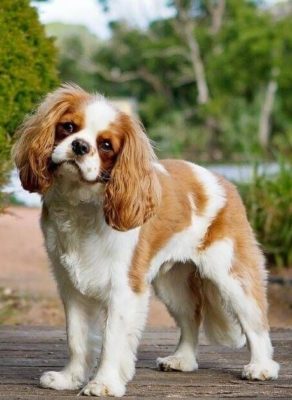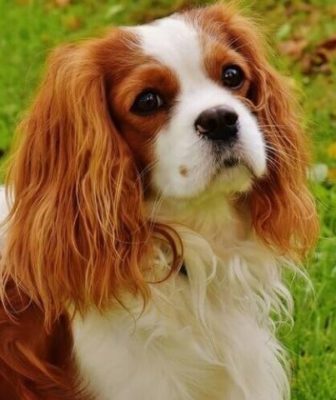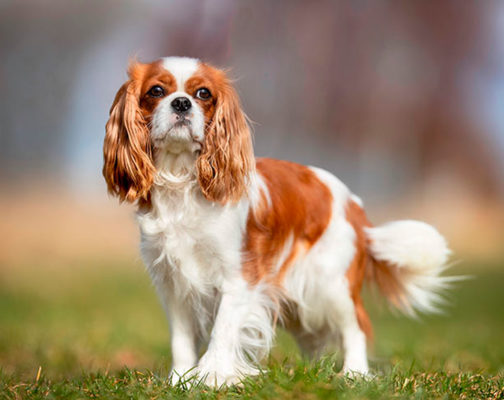Cavalier King Charles Spaniel
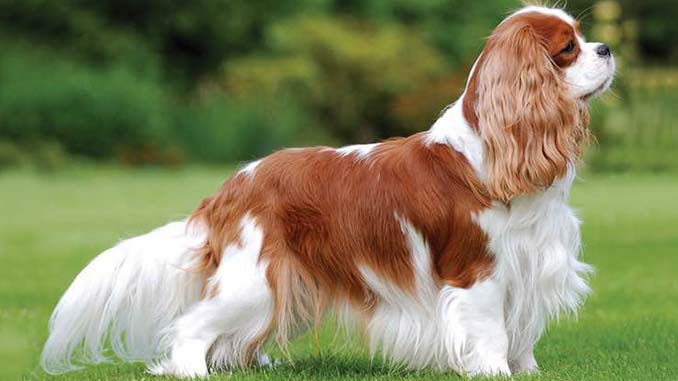
Cavalier King Charles Spaniels are purely decorative dogs. They are good companions. The animals are not meant for other functions, and according to this, they have bred hundreds of years ago. Cavalier King Charles Spaniels are not very socialized. They like to be in a home environment and spend cozy evenings with their owner. The pets should be showered with affection and attention. They love to be placed on your lap to be petted.
Table of Contents
Breed Information
| Another Name | – |
| Origin | England |
| Height | 30-33 cm |
| Weight | 6-8 kg |
| Fur | Long |
| Color | Black with red tinges, blenheim, ruby, tricolor |
| Lifespan | 9-15 years |
| FCI Classification | Companion and Toy Dogs |
| Group | Small breed or decorative dogs, dogs for apartments, dogs for children |
| Price | From $800 to $1900 |
Breed Photos
Origin History
The ancestors of the breed are recognized toy spaniels. They were popular in Europe and England in the 16th and 18th centuries, after which they disappeared. Therefore, it was not easy to restore the history of the breed. The Cavalier King Charles Spaniel is named after Queen Mary, monarchs Charles I and Charles II. The Queen’s family loved dogs. Charles II even issued a proclamation that allowed spaniels in the Houses of Parliament and public places. And in society, the monarch always appeared with two or three of the breed. After the death of Charles II, the popularity of the Cavalier King Charles Spaniels faded. Pugs, which for Europeans seemed to be exotic Oriental animals, became a pedestal. Later, pugs began to be crossed with spaniels. As a result, the breed became a bit modified: the muzzle became shorter and flattened.
In the 1920s, representatives of the Cavalier King Charles Spaniels could be counted on their hands. Their popularity had so waned that when one enthusiast wanted to revive the breed, he could not find a single specimen. So Eldridge offered a handsome sum of money to anyone who would provide him with a Charles II-era spaniel. In 1928, a woman named Mostyn Walker rendered such a favor. A few months later, a dog show was scheduled. The enthusiast had died a month earlier. So Walker was paid at the competition, and her pet became the official breed standard. Soon representatives of the Cavalier King Charles Spaniels were exported to the United States, where they were registered with the American Kennel Club.
Appearance
The pets are endowed with European grace: silky hair, deep eyes, elegant movements, and the ability to pose. No matter how you photograph your pet, it will turn out well. Dogs have a large build. Small head and elongated muzzle type. Neck with a slight curve. The eyes are not bulging, dark and large. The ears of representatives of the breed long, set high, covered with silky wool. The lower teeth overlap the upper.
The legs of Cavalier King Charles Spaniels are straight and moderately bony with small feet. The long coat feels like silk. Both slight waviness and smooth coat are allowed. Color can be ruby, black with tan, blenheim, or tricolor (black with white and red tan on brow, cheekbones, back of legs, ears, and under the tail).
Character
Cavalier King Charles Spaniels are purely decorative dogs. They are good companions. The animals are not meant for other functions, and according to this, they have bred hundreds of years ago. Cavalier King Charles Spaniels are not very socialized. They like to be in a home environment and spend cozy evenings with their owner. The pets should be showered with affection and attention. They love to be placed on your lap to be petted. The prolonged absence of the owner the dog does not accept. If you go on vacation, it is better to choose a dog-friendly option and take him with you.
Cavalier King Charles Spaniels are endowed with an easy-going and calm character. In life, they find contact with almost everyone and are friendly with other pets. The capricious and aggressive animal can become only if it is spoiled. Sometimes there may be bouts of laziness. Active walks and training should be carried out regularly.
Care
A long hair breed needs proper care. Comb your dog’s hair three to four times a week and occasionally tuck it in the right direction with a comb. Check the ears and eyes daily for debris and earwax buildup. Bathing the Cavalier King Charles Spaniel once or twice a week is recommended. File nails with a nail file two to three times a month.
Having a long coat makes dogs sensitive to the sun’s rays. Prolonged exposure to the sun is dangerous. In the summertime, especially carefully inspect the ears and body of your Cavalier King Charles Spaniel for comas, ticks, and plants. Representatives of the breed are active, so they often carry dirt home.
Training
Dogs are easy to train, although they can turn on lazy pet mode. They are smart and will resort to tricks the moment they get bored. It is also possible that the pet is overworked. It is how a Cavalier King Charles Spaniel lets you know that enough exhausting training is enough. Cynologists recommend training the representatives of the breed in the form of playful activities and without aggression. Congenital timidity when raising the voice can frighten the pet, and he will forever refuse to cooperate with you. Cavalier King Charles Spaniels are still adventurous. They won’t miss chasing a mouse or playing with other dogs. That’s why basic commands like “Foo” and “Near” are worth learning early.
Common Diseases
The breed’s limited genetic base and crossbreeding experiments have led to frequent genetic diseases. The main ones are myxomatous valve degeneration and Chiari syndrome (cervical problems). Cavalier King Charles Spaniel representatives are often prone to:
- mitral valve disease;
- occasional fall;
- hip dysplasia;
- dislocation of the knee;
- syringomyelia – lesions of the brain and spine;
- nervous scabies.
Nutrition
Obesity is common among Cavalier King Charles Spaniels. Therefore, it is worth taking this into account when formulating the diet. For feeding aristocratic pets, both natural food and dry food are suitable. Naturally, the natural diet is healthier. The basis should be cereals, vegetables, low-fat dairy products, and lean meat. Sometimes you can please your pet with chicken or quail eggs. It is completely worth giving up:
- tubular bones;
- sausages;
- sweet and salty;
- fatty meat;
- mushrooms;
- sour cream and cream;
- legumes;
- pearl millet porridge;
- white bread;
- river fish.
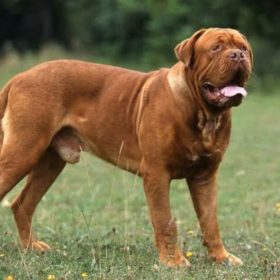 Dogue de Bordeaux
Dogue de Bordeaux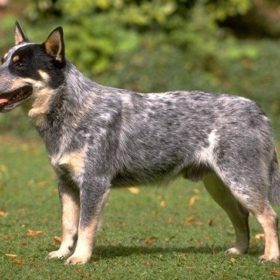 Australian Cattle Dog
Australian Cattle Dog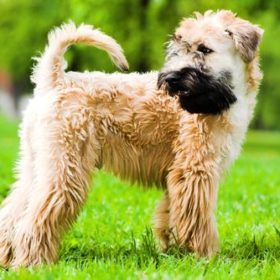 Soft-coated Wheaten Terrier
Soft-coated Wheaten Terrier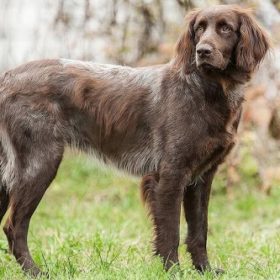 German Longhaired Pointer
German Longhaired Pointer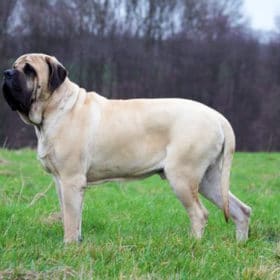 English Mastiff
English Mastiff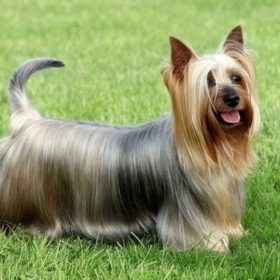 Australian Silky Terrier
Australian Silky Terrier